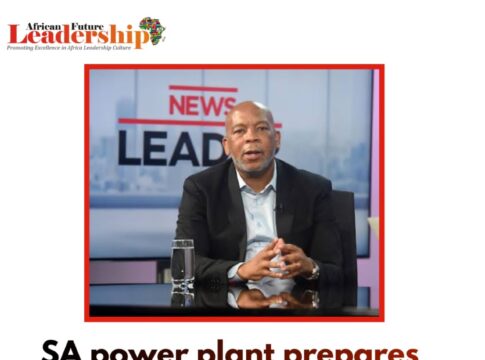Steam continues to rise from some of the cooling towers at the South African power plant, which was supposed to be in Kusile, but was closed in October last year due to a disaster.
However, Tutuka power plant management expressed confidence during Energy Minister Kgosientsho Ramokgopa’s visit on Wednesday that the Mpumalanga power plant could boost production significantly ahead of a harsh winter and double its capacity by the end of March next year.
If successful, this will add about 800 MW to the grid, enough to barely avoid an unloading phase at first, and increase to 1,500 MW by the end of March 2024, avoiding a phase and a half of nationwide blackouts.
Media coverage made Tutuka synonymous with corruption at Eskom, as the state-owned energy companies themselves reported sabotage, tender fraud, and supply chain disruptions found at the facility.
During a presentation to the standing committee on public accounts at the end of January, former CEO André de Ruyter, explained how criminality at Tutuka is linked to broader issues in Mpumalanga where much of the crime and corruption is driven by syndicates in the area. The criminality, he said, is “well-organised and deeply embedded”.
De Ruyter said the GM at Tutuka, Sello Mametja, wore a bulletproof vest when walking around the plant and he and his family have bodyguards.
Mametja left Tutuka a couple of weeks ago and has been replaced, in an acting capacity, by Mxolisi Ntanzi, formerly a project manager at the station.
Still, Eskom assured Business Day there was nothing untoward about Mametja’s departure from Tutuka. “Considering the needs of the organisation, it was decided to reassign Mr Mametja to the Operating, Maintenance and Outage Centre of Excellence where he will serve the coal-fired power stations,” Eskom said.
Ramokgopa visited Tutuka on Wednesday as the fourth part of a tour of all 15 of Eskom’s over the next two weeks.
Ntanzi only wears a reflective vest as he walks around the power station with Ramokgopa.
“I feel safe. The previous GM had some issues … which [contributed] to him needing a [bulletproof] vest … but I am feeling safe and I trust the workers,” he told Business Day
During his visit Ramokgopa said Tutuka was the worst-performing plant after Kusile and it was the first facility where management and union leaders have told him that there are problems linked to corruption such as “issues that require attention in their procurement environment”.
“There are procurement irregularities [at Tutuka] that can be closely associated with the existing production delays,” Ramokgopa said. That includes the procurement of spare parts for units when they break down.
Ramokgopa also said that the Tutuka management told him about the problems they had with the type of coal that was being supplied, but he said that he had no idea that the problems in the coal were linked to criminal syndicates.
“I can confirm there are issues of coal quality — coal mills are being destroyed because there are rocks and stones mixed in with the coal delivered to the station … but the quality of the coal has nothing to do with the cartels.”
Rather, he said, it was due to “what was coming out of the mine. Essentially it is the quality of the coal that is coming out of the mine that requires our productive attention.”
On the day of the minister’s visit, three of Tutuka’s six 600MW generating plants were operating, providing an electricity input factor (EAF) – a measure of the energy produced in relation to the total installed capacity – of 32%. Although low, this is an increase from earlier this year, when the plant’s EAF was only 17%.
Ntanzi tells Business Day that his team wants to improve the EAF to around 50% by winter and 70% in the next 12 months.
Two projects that will help them achieve the target are finalising the refurbishment of four cooling towers at the plant by replacing the fills — a medium that increases the surface area for evaporation — in the cooling towers, and improving the reliability of the coal-milling plant.
“If we can get those right the EAF will definitely improve,” he said.




